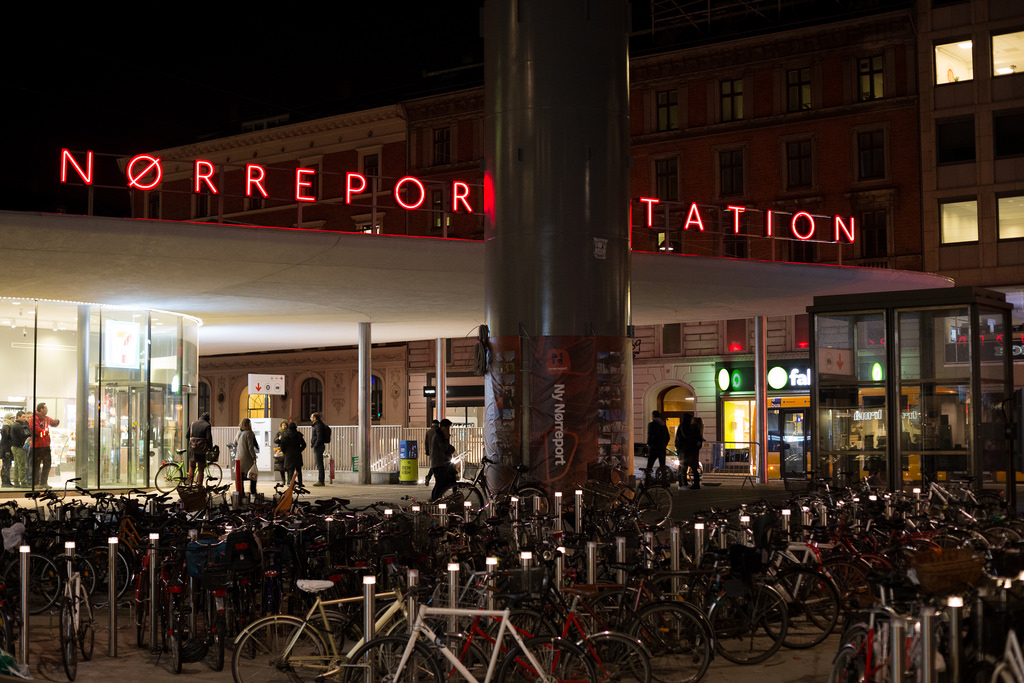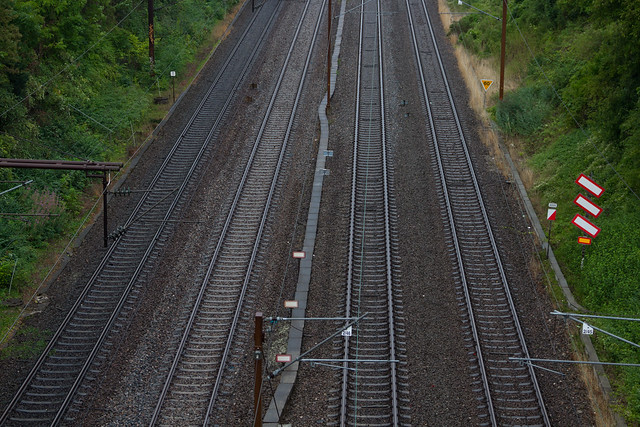Copenhagen – Embracing Technology, Exploiting Tourists

Recently we saw the phase-out of Denmark’s klippekort (Clip Cards). These klippekort allowed commuters to get significantly discounted public transit tickets by purchasing bulk trips 10 at a time. Like many systems around the world, on-site pricing for buses is higher than tickets purchased in advance. This discourages people slowing down the loading/boarding process and encourages people to participate in transit programs. All of which is great. However, unlike other programs where the increased pricing is only applied to time-sensitive transit situations (eg: buses) – the Danish system charges the same high rate across the board regardless of if you’re purchasing a one-off ticket on a bus, from a kiosk, or at an automatic vending machine.
It typically costs you 24 DKK for a one-hour two zone ticket in Copenhagen. When calculated using a 10 ticket klippekort the adjusted price typically averaged out to 15 DKK or less. From a pricing standpoint, 24 DKK is quite an excessive price (even by Danish cost-scales) for a ticket, while 15 DKK may not be cheap but is still quite a bit more reasonable.
Visitors to Copenhagen were able to buy a clip card and use it without incurring any additional costs, technical barriers, or obstacles. Unfortunately, in their push to digitize, these old paper Clip Cards were done away with and phase out completely on June 30th.
The system that replaced them has been two fold. You’re faced with either the option of purchasing (80 DKK) a transit card called a rejsekort – http://www.rejsekort.dk/ – (a bit like the UK’s Oyster card) that you pre-charge and then use to check in and check out with the trip amount being automatically deducted. This card has a number of restrictions making it unpractical for tourists, grants you an additional 20% discount when traveling during off-peak times (dropping the 15 DKK ticket to 12 DKK), and requires you keep at least 50 DKK on the card at any time which is almost impossible to cash-out and which equates to a 50 DKK sunk cost on top of the 80 DKK signup fee.
The other option is to use your mobile. If you download the app, navigate the settings, and manage to get it switched over to English, you can then purchase discounted tickets. Of course, this requires that you have a functional cell phone, with data, learn and master the whole Danish zone system (which most Danes don’t even really have a firm grasp on), and then take care of app-based billing while hoping it 1) works and 2) doesn’t incur secondary fees.
If we’re to be honest, neither of these two options are viable for tourists. Annoyed and frustrated, I reached out to several DSB staff members based at Norreport station. Their answer? The same old broken record – tell people to buy a 24 or 72 hour city pass.
Are these city passes actually a good deal? It depends, but usually – no. The 24 hour city pass costs 80 DKK while the 72 hour pass costs 200 DKK. Where these are a good deal is in cases where people are based in or traveling repeatedly into zones 3 and 4. However, a good 95% of a tourists’ time will be spent in Zones 1 and 2. If you’re a hostel/backpacker all of the city’s key hostels are in the heart of these two central zones. Also, just to put things into context, my 30 day unlimited 2 zone commuter’s pass costs me a bit under 400 DKK and that’s for unlimited travel over an entire month.
If we assume the price tourists would/should be paying using the old system or if they had the default, peak period, access to the tools residents have we can assume they SHOULD be paying 15 DKK per trip. Given the small geographic size of CPH it is unlikely that most people will travel by public transit more than three, perhaps 4, times in a given day. At a price of 15 DKK per trip, you’d need to travel 5 1/3 times to reach the “value” of a 80 DKK 24 hour ticket. Meanwhile if we look at the same for the 200 DKK 72 hour ticket, you’ll need to take 13 1/3 trips over that three day period or roughly 4 ½ trips per day, every day, for the duration of the ticket to break even with what tourists SHOULD be paying.
Of course, if we use the sticker price that tourists are currently being forced to pay (24 DKK) then that drops to 8 1/3 trips before it becomes a decent deal on the 72 hour ticket, and a mere 3 1/3 trips on a 24 hour ticket.
I believe one of the reasons Copenhagen has a reputation as such an expensive city is the simple fact that the first and last thing most visitors experience is getting price-gouged by the public transit system. That’s extremely unfortunate. It’s also very unfortunate that in a society based around fairness and equal treatment, that visitors are so obviously being exploited under the new system.
Tourists bring in a significant amount of money and have a direct impact on large swaths of Copenhagen’s economic eco-system. Copenhagen, and Denmark as a whole should be embracing technology as a tool to help encourage and reward their interest in Denmark while facilitating the investment of their tourist dollars. Not squeezing them for pennies in a poorly thought out and even more poorly executed Nickel and Dime scheme.
For reference you can find pricing and a breakdown of Copenhagen’s public transit system via the Visit Copenhagen website: http://www.visitcopenhagen.com/copenhagen/transportation/tickets-prices
TL:DR version for tourists: Install and use the app if you can. Otherwise, do a little research and evaluate which zone you’ll be in and if it makes sense to buy a commuter card. Remember, purchasing tickets from kiosks, on the buses, and vending machines means you’ll pay 2x normal prices.


Great post – very relevant input to the Danish authorities including the National Railways (DSB etc).
I have now emailed a link to your post to the Mayor of CPH – Mr. Frank Jensen – email overborgmesteren@kk.dk, and included my own recommendations on how to solve the issue. (Wish there could be a “Rejsekort” not bound to any person – and it should be preloaded with f.x. 100 DKK or 200 DKK. After use it should be refundable in stations and airport).
Hope it helps
BR Lars Rune
Awesome Lars! Thank you!
Hello!!
i was looking for some info about Denemark and i found your blog post, i like your article name : Copenhagen – Embracing Technology, Exploiting Tourists , means it’s very hard to have a cheap holidays in copenhagen….
greeting From Barcelona
Hi, thanks for the comment. Actually, Copenhagen can be quite affordable. True, it’s not as cheap as Prague or Budapest, but compared to London, Stockholm, Oslo, or Paris i’d say it is a bit cheaper. You’re also going to get quality more consistently in DK. So, even when paying a little bit more, the overall quality will be higher per-meal/experience.
thanks for the reply
Very good guide, Alex. As you mentioned, Copenhagen has a reputation as such an expensive city, so this post is ideal for the travelers.
Thanks Izy!
Do you know any good places to stay? Even Airbnb is pricey here, as are the hostels.